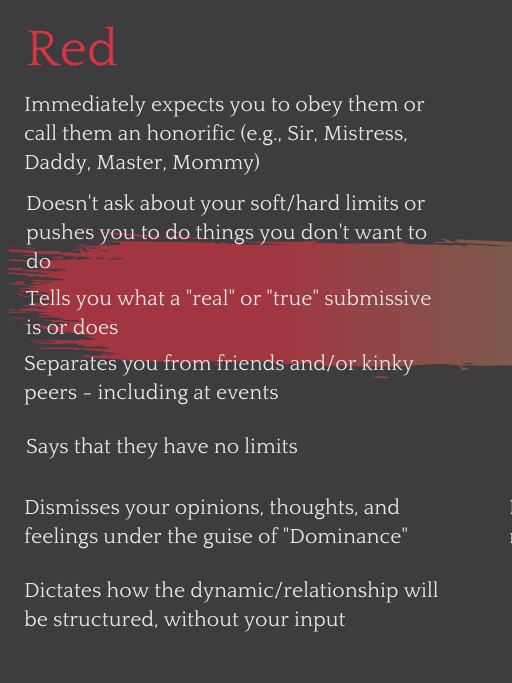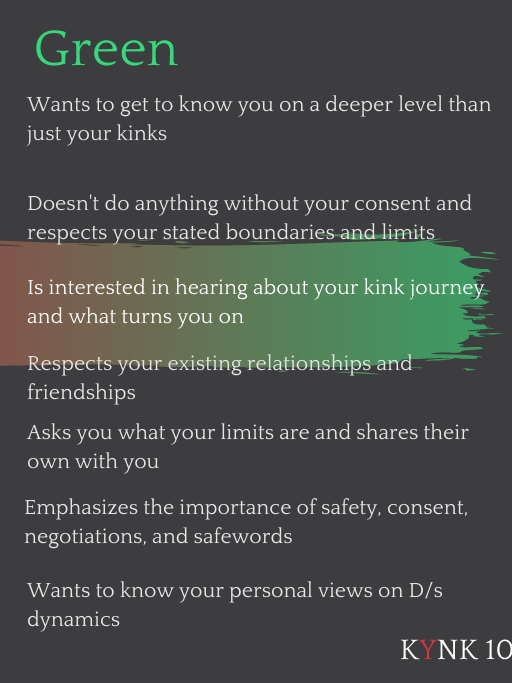Exploring extreme sex can be exciting, but it also comes with some important things to keep in mind. This article is here to help you understand how to stay safe and have fun. We’ll talk about setting clear boundaries, picking safe words, and making sure everyone feels comfortable before, during, and after things get intense.
Whether you’re trying something new or just want to make sure you’re doing things right, you’ll get practical advice to keep your experiences safe and enjoyable. So, if you’re curious about how to navigate these thrilling adventures responsibly, let’s dive in and get educated!
Examples of Extreme Sexual Practices

When we talk about extreme sexual practices, we’re focusing on things that push limits and need serious trust and clear communication. These are activities that go beyond typical kinks and can involve real risks if not done carefully. The key is knowing what you’re getting into, setting solid boundaries, and always putting safety first.
| Edge Play | Activities that push physical, mental, or emotional boundaries, often involving higher risks (e.g., knife play, fear play). |
| Blood Play | Activities that involve intentionally drawing blood, often using needles or cutting tools. |
| Electro Play | Using devices that deliver controlled electrical shocks to the body for intense sensation play. |
| Breath Control | Activities that involve restricting airflow for heightened arousal. Extremely risky and should only be done with clear communication and safety measures. |
| Suspension Bondage | Involves restraining and suspending someone in the air using ropes or other restraints, often requiring skill and experience. |
| Needle Play | The insertion of needles into the skin for controlled, consensual pain and sensation. |
| Fire Play | Using fire to create intense sensations on the skin, typically involving the careful application of flames with safety protocols. |
| Total Power Exchange | A dynamic where one person gives full control to another, often involving 24/7 submission. |
How to Talk About Extreme Sex with a Partner

Bringing up sexual interests that are outside the usual stuff can feel awkward. It’s a tricky conversation, but if you want to explore new things, you need to talk about it first. It doesn’t matter if it’s your long-time partner or someone you’re hooking up with—communication is key. Here’s how to approach it without making it weird.
Picking the Right Moment to Talk About Extreme Sex
You can’t just drop this kind of conversation out of nowhere. Timing matters. For starters:
- Choose a relaxed setting: Talk when both of you are comfortable—maybe hanging out at home, chilling after dinner, or during a quiet walk.
- Don’t rush it: This isn’t a quick chat. Give yourselves time to really talk things through.
- Skip the bedroom talk: You don’t want to spring it on someone right before things get physical. Set the stage when there’s no pressure.
How to Start the Conversation
The way you bring it up makes all the difference. Keep it clear, honest, and open-ended:
- Long-term partners: Try saying, “I’ve been thinking about trying something new—can we talk about what we’re both comfortable with?”
- New or casual partners: A simple, “I’m into some stuff that might be different—can we talk about what we both like?” gets the message across without being pushy.
- In group or club settings: “Before we start, I’d love to check in on everyone’s boundaries. What’s cool, what’s not?”
These approaches are direct but respectful. You’re opening the door for a two-way conversation, not just listing what you want.
Balancing Power Dynamics

When exploring extreme practices, power dynamics are a big part of it. Whether it’s someone taking control or swapping roles, both sides need to feel respected and safe. Here’s how to keep it balanced and make sure everyone stays comfortable.
Agreeing on Roles and Boundaries
Power dynamics don’t work if they’re one-sided. Both people need to agree on what’s happening. Some setups could include:
- Dominant and Submissive: One person leads, and the other follows—but only within limits both agree on.
- Switching Roles: Sometimes people switch who’s in control. Clear communication is key so nobody gets surprised.
- Top and Bottom: One person does the action, and the other receives it. Again, both sides need to know what’s okay and what’s off-limits.
The point is, everyone should know what to expect before anything begins.
Setting Boundaries and Getting Consent

When you’re exploring extreme sex, boundaries and consent are non-negotiable. Think of boundaries as the ground rules that keep everyone on the same page. And consent? That’s making sure everyone’s saying a clear “yes” before anything happens.
Understanding Different Boundaries in Extreme Sex
Not all boundaries are the same. Here’s a breakdown:
- Physical Boundaries: This covers where and how someone can touch you. Be specific: “I’m okay with being touched here, but not there.”
- Emotional Boundaries: These involve personal topics or scenarios that may be emotionally difficult or triggering. For example, some people might not want to engage in role-playing scenarios that hit too close to past traumas.
- Mental Boundaries: Mental boundaries protect your mindset and psychological well-being. For instance, someone might need to avoid scenarios that cause overwhelming stress or anxiety, even if they seem physically safe. Being clear about what can affect you mentally is key.
- Trigger-Specific Boundaries: Some people have certain triggers—specific words, actions, or situations—that can bring up past trauma or discomfort. Discussing these ahead of time helps everyone steer clear of these sensitive areas.
- Situational Boundaries: These apply to specific environments, like group play, clubs, or public settings. For example, you might be okay with certain activities in private but not in a public space.
These boundaries make sure everyone’s comfortable from start to finish.
Getting and Maintaining Enthusiastic Consent
Consent isn’t just a quick yes at the start—it’s an ongoing process. Here’s what you should keep in mind:
- Clear and Enthusiastic “Yes”: Consent should be given freely, without pressure. You want a confident “yes,” not a hesitant “I guess that’s okay.”
- Checking In Regularly: Even after someone says yes, it’s important to check in as things progress. A quick “How are you feeling?” or “Is this still good?” goes a long way in making sure everyone’s comfortable.
- Reading Body Language: Sometimes people might be uncomfortable but not say it out loud. Pay attention to cues like tense muscles, a distant look, or hesitation. If something feels off, pause and ask how they’re doing.

What to Do When Boundaries or Consent Are Broken
Sometimes, even with the best intentions, boundaries get crossed or someone’s consent isn’t fully respected. Here’s how to handle it:
- Pause Everything Immediately: If someone uses a safe word or signals discomfort, stop right away—no questions asked.
- Acknowledge What Happened: It’s important to address the situation without getting defensive. Something like, “I’m sorry, I didn’t realize that made you uncomfortable. Let’s talk about what went wrong.”
- Have an Open Conversation: Talk through what happened in a non-judgmental way. This can help prevent the issue from happening again and rebuild trust.
- Reevaluate Boundaries and Consent: After an issue arises, you may need to adjust your boundaries or come up with a new plan to ensure everyone feels safe moving forward.
Keep In Mind:
If trust is seriously damaged, it might be time to step back from the dynamic or even end it, depending on how comfortable everyone is continuing.
Choosing and Using Safe Words

Safe words are all about clear, simple communication. They’re there to make sure everyone feels safe and comfortable, no matter what’s happening. Here are some examples of safewords you might hear
| Safe Word | Meaning |
|---|---|
| Red | Stop immediately. Something is wrong and needs focused communication or to stop all play etc. |
| Yellow | Slow down or check in because something needs to be adapted or dialed back, etc. |
| Green | Keep going, everything is good. Not really used that much. |
| Stop | Yes, using this word is totally ok. “Pause” can be a variatnt |
| Mercy | Stop due to discomfort or pain. |
Using safe words this way keeps everyone on the same page, even when things get intense. The important thing is that everyone agrees on the system before you start and respects it fully.

Navigating Group, Casual, or Professional Settings
When dealing with multiple partners, group settings, or professional dynamics, the communication game changes a bit. There are more people involved, and that means more boundaries, consent, and communication to manage.
Setting Boundaries in Group Scenarios
Group dynamics require a bit more structure to keep everyone safe and comfortable. Here’s how to approach it:
- Pre-Event Discussions: Before anything happens, make sure all participants are clear on their boundaries. This can be a group chat or individual check-ins.
- Roles and Expectations: Some people might be more active participants, while others are comfortable observing. Clarify everyone’s role upfront.
- Using a “Check-In” System: With more people involved, it’s easy for someone to feel left out or overwhelmed. Build in regular check-ins, like saying “pause” if someone needs to speak up or take a break.
Communication in Casual or One-Time Dynamics
When you don’t have history with someone, you can’t rely on familiarity or trust that’s built over time. That makes communication even more crucial:
- Keep It Direct and Clear: No room for vague language here. Be upfront about what you’re into and what you’re not.
- Revisit Boundaries Often: Since this is likely new for both people, check in more frequently. A simple, “Are you good with this?” can help keep things comfortable.
- Respect Their Limits Immediately: Casual dynamics mean less context for what someone’s boundaries are. If they signal discomfort, stop and reassess instantly.
Navigating Professional Sessions
Professionals usually have systems in place, but you still need to clearly communicate your needs and boundaries:
- Discuss Everything Beforehand: Professionals expect detailed conversations about what’s on the table and what’s not. Be specific and clear.
- Understand Their Rules: Professionals might have their own limits and boundaries. Make sure you respect those, too.
- Don’t Assume Familiarity: Even if you’ve had similar experiences, every professional is different. Treat each session as unique.
Building Trust Through Aftercare

Aftercare is what happens right after any intense experience. It’s about checking in, calming down, and making sure everyone feels good and connected again. When things get emotionally or physically intense, aftercare is like hitting the “reset” button—it helps smooth everything out and keeps trust strong.
Why Aftercare Is Important After Extreme Sex
Exploring extreme dynamics can leave people feeling drained, both mentally and physically. Aftercare gives you time to process those feelings, recharge, and make sure everyone’s on the same page. It’s not just about patching things up if they went wrong—it’s about showing that you still care and respect each other, even after pushing boundaries.
Different Types of Aftercare
Aftercare isn’t one-size-fits-all. What works best depends on what you need at the moment. Here are some examples:
- Physical Comfort: Simple things like hugging, holding hands, or wrapping up in a blanket can be really grounding. It’s about reconnecting and feeling safe.
- Talking Quietly: Sometimes you just need to talk through what happened, share what you liked, or clear up any lingering thoughts. It’s also a good time to check in and see how everyone feels.
- Taking a Break: Maybe you both need some space—grabbing a snack, having a drink of water, or just sitting quietly together can help bring the energy back down.
Communicating Your Aftercare Needs
Everyone’s different when it comes to what they need after an intense experience. Some people want a lot of attention and closeness, while others prefer a bit of space. It’s really important to talk about this beforehand so there are no surprises later. Just like you plan for boundaries and safe words, plan for aftercare. Ask questions like, “How do you usually feel afterward?” or “What makes you feel good and comfortable once things wrap up?”
Don’t Skip It—Even If You Feel Fine
Even if everything went smoothly, aftercare still matters. It reinforces the trust you’ve built, lets you reconnect on an emotional level, and ensures nobody feels left hanging. Skipping aftercare can leave someone feeling disconnected or even upset later on. So whether you’re doing it to calm down or just to wrap things up nicely, aftercare is always a good idea.
How to Safely Exit When Things Go Wrong
Sometimes, even when everyone has the best intentions, things can go off-track. Maybe the vibe is off, boundaries aren’t respected, or you just feel uncomfortable. Knowing how to exit safely and calmly is super important, no matter who you’re with or where you are.
Spotting Red Flags in Extreme Sex – Signals It’s Time to Go
Recognizing these signs early can prevent things from escalating. Here’s how you can tell it’s better to step away:
- Someone ignores your safe word or signals: If a safe word is used and nothing changes, that’s a big sign it’s time to leave.
- Pressure or pushing boundaries: If someone is constantly trying to move past the limits you’ve set, they aren’t respecting your boundaries. That’s a red flag.
- Gut feeling that something’s off: Sometimes, you just know. Even if nothing “major” happens, trust your instincts. If something feels wrong, it probably is.


How to Exit Without Drama
When it’s time to go, you want to do it smoothly. Here’s how to make your exit without creating a scene:
- Be direct, but simple: You can say, “I’m not feeling comfortable, so I’m going to head out,” or “I need to step away for a bit.”
- Use a pre-set exit plan: In group settings, it’s smart to have a plan before you start. For example, having a friend on standby who can give you an easy out with a call or text.
- Don’t over-explain: You don’t need a big reason or to justify your feelings. If you’re uncomfortable, that’s enough. Just state your decision and move on.
Getting Support After Leaving
Leaving an extreme sex situation isn’t the end. It’s important to process what happened and get support if you need it:
- Talk it out with a trusted friend: Sharing what happened with someone you trust can help you sort through your thoughts and feelings.
- Consider professional support: If the experience was really tough or triggering, talking to a therapist who specializes in sexual dynamics can be helpful.
- Learn from the experience: Reflect on what made you uncomfortable so you can set clearer boundaries next time.
Remember:
No matter what, remember it’s okay to walk away. Your comfort and safety always come first – no matter if you’re the giver or receiver.
Resources for Further Learning and Support

Learning more about communication, boundaries, and consent—especially in extreme practices—can make everything feel safer and more comfortable. Below are some solid resources to get you started.
Recommended Reading
- “The Ethical Slut” by Dossie Easton and Janet W. Hardy: This book covers everything from open relationships to setting boundaries and communicating clearly.
- “Come As You Are” by Emily Nagoski: A science-backed guide that dives into understanding your own sexual preferences and comfort zones.
- “Playing Well with Others” by Lee Harrington and Mollena Williams: This book is all about navigating kink communities and practicing good communication and consent.
- Kinkly.com: A website full of articles on everything from safe words to relationship dynamics, with a focus on education and safety.
Online Communities and Forums for Extreme Sex
Connecting with others who share your interests can be helpful, but it’s important to approach online communities carefully. Information can be helpful, but not always accurate. Keep your eyes open and use these spaces to learn while thinking critically:
- FetLife: A social network for kink and BDSM communities. You can join groups, read discussions, and connect with others.
- Reddit: r/BDSMcommunity: A space for advice and sharing experiences, but always take what you read with a grain of salt.
- Kink Academy: An online education platform offering videos and courses on communication, consent, and various practices.
Note:
While these communities can offer valuable advice and connections, not everything shared online is accurate or safe. Always cross-check information with trusted sources and go into these spaces with an open mind, but a cautious one.
When to Seek Professional Guidance
Sometimes, reading and online chats aren’t enough. If you need deeper support or run into challenges, consider speaking with a professional:
- Sex Therapists: They’re trained to help navigate sexual dynamics, whether it’s communication issues, setting boundaries, or exploring new practices.
- Relationship Counselors: If you’re exploring new dynamics with a partner (or more than one), a counselor can help you communicate better and set up healthier practices.
- Support Groups: Both online and in-person, these groups allow people to share experiences and get advice in a more structured, safer environment.
Whether you’re just getting started or already exploring, these resources can help you stay informed, safe, and comfortable as you learn more.
Extreme Sex – Wrapping It All Up

Exploring extreme sex dynamics doesn’t have to be complicated, but it does take good communication and a lot of trust. Whether you’re setting boundaries with someone new, using safe words to keep things clear, or learning how to support each other with aftercare, it all comes down to making sure everyone feels safe, heard, and respected.
Don’t rush things. Take your time, talk honestly, and keep checking in. The more you stay open and clear with each other, the better your experiences will be—whether it’s a one-time encounter or an ongoing relationship. At the end of the day, it’s all about making sure everyone is on the same page and enjoying the experience together.
Want More Useful Articles?
- The Ultimate BDSM Aftercare Guide: Nurturing Doms & Subs Post-Play
- 101 BDSM Humiliation & Degradation Ideas to Make Your Sub Squirm
- 12 BDSM Plants – Grow Your Own Pain Garden and Harvest Your Kink


